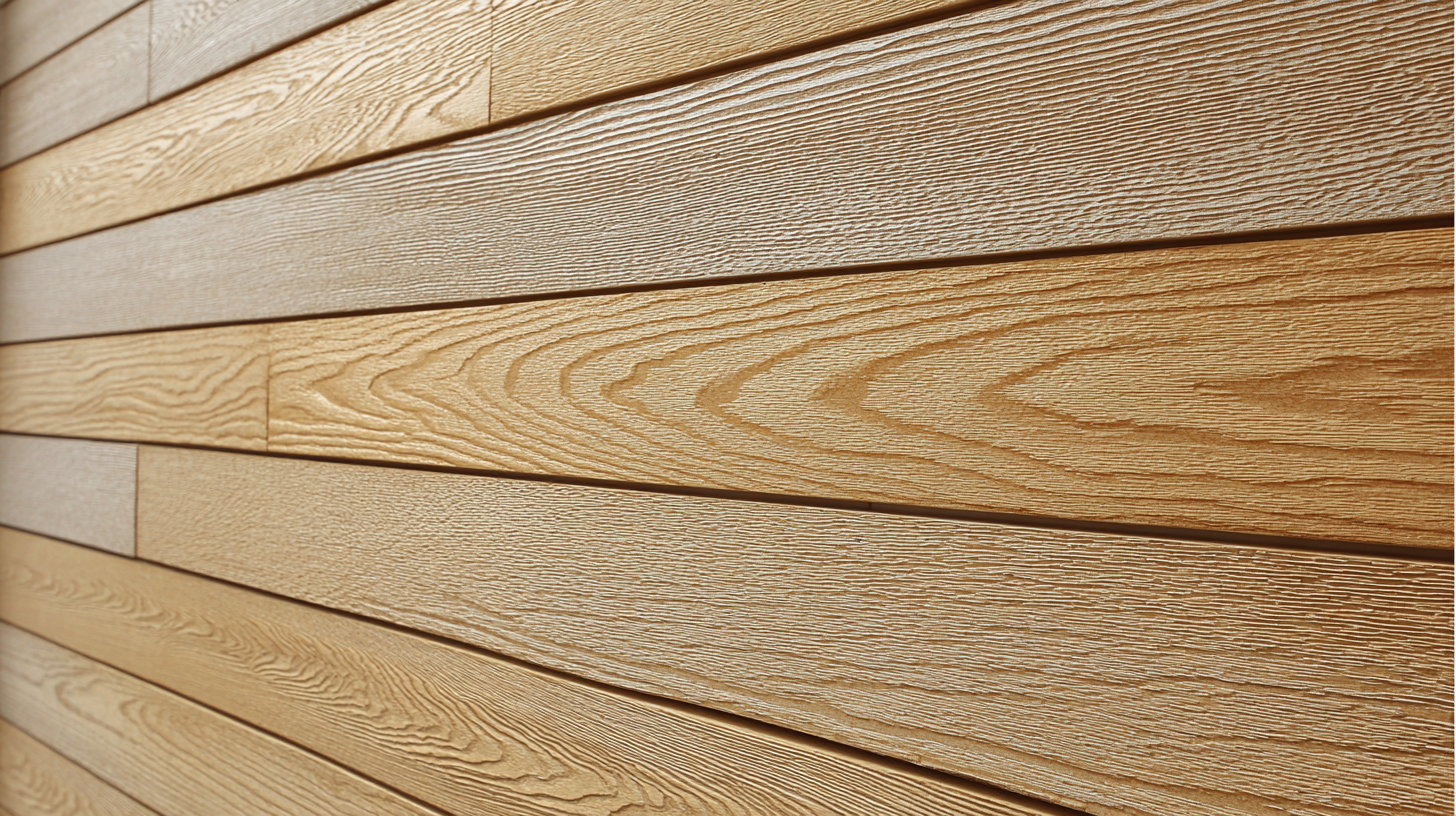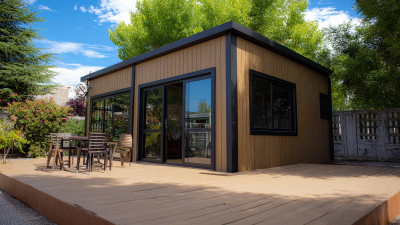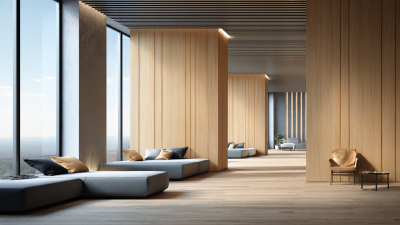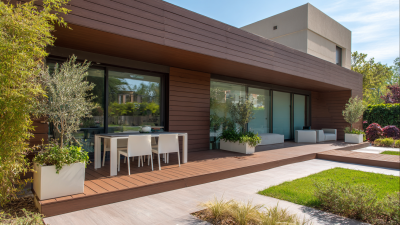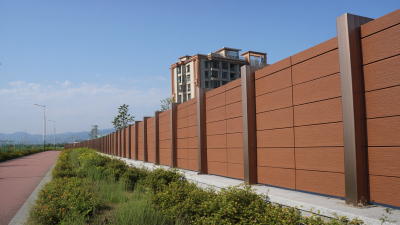Leave Your Message
When selecting materials for exterior design projects, the Wpc Cladding Wall Panel has gained significant traction due to its unique blend of aesthetics, durability, and sustainability. According to a recent industry report by ResearchAndMarkets, the global WPC market is projected to reach 7.6 billion USD by 2027, driven by a rising demand for eco-friendly construction materials.

As architects and builders increasingly prioritize sustainable practices, Wpc cladding stands out for its low maintenance requirements and resistance to weather elements, making it an ideal choice for various applications.
Furthermore, the versatility of Wpc in mimicking traditional wood finishes while offering enhanced longevity helps it cater to both contemporary and classic architectural styles. Therefore, understanding the features, benefits, and the best choices available in Wpc Cladding Wall Panels is crucial for ensuring your next project not only meets design intent but also adheres to sustainable building practices.
When selecting WPC (Wood-Plastic Composite) cladding wall panels for your next project, it's essential to understand the different types of materials available. WPC cladding typically combines recycled wood fibers with plastic, creating a versatile and durable option for various applications. Two primary types of WPC cladding materials are hollow and solid panels. Hollow panels are lighter and often more cost-effective, making them suitable for less demanding environments. However, they may not provide the same level of insulation and durability as their solid counterparts.
In contrast, solid WPC cladding offers superior strength and insulation, making it an ideal choice for areas that experience extreme weather conditions or require enhanced structural support. Additionally, solid panels are more resistant to warping and can better withstand moisture, which is crucial for outdoor applications. When making your decision, consider factors such as environmental conditions, aesthetic preferences, and long-term maintenance to ensure you choose the best WPC cladding material for your project's specific needs.
When evaluating the durability of WPC (Wood Plastic Composite) cladding wall panels, several factors come into play. These materials are designed to withstand various environmental conditions, making them a robust option for both indoor and outdoor applications. WPC panels are resistant to moisture, which helps prevent issues such as warping and rotting that often affect traditional wood. Additionally, they have a high resistance to UV radiation, ensuring that their color and integrity remain intact over time, even in sunny climates.
Maintenance needs are another crucial aspect to consider. WPC panels generally require less upkeep compared to conventional wood. They do not need regular staining or sealing, which can save both time and costs. Routine cleaning with soap and water typically suffices to keep them looking fresh. However, it's essential to check for any signs of damage or degradation periodically, as dirt or debris can accumulate in grooves. By understanding these key durability and maintenance factors, you can make a more informed decision when selecting the best WPC cladding for your project.
When selecting WPC (Wood Plastic Composite) cladding wall panels for your next project, considering aesthetic options and design flexibility is crucial. WPC cladding comes in various textures, colors, and finishes, which allows you to create a visually appealing exterior that complements your architectural vision. From natural wood grains to modern, sleek surfaces, the range of choices can suit diverse styles, whether you're aiming for a rustic charm or a contemporary look. This versatility enables homeowners and architects to maintain cohesiveness with the surrounding environment or to introduce bold, distinctive features that stand out.
Moreover, design flexibility is one of the key advantages of WPC cladding. The material can be easily cut and shaped to fit unique wall structures and designs, allowing for innovative layouts, patterns, and applications. This adaptability makes it an excellent choice for custom projects where traditional materials may fall short. Additionally, WPC panels can be installed in various orientations—horizontally, vertically, or diagonally—offering even greater creative freedom. By assessing both aesthetic choices and design capabilities, you can select the ideal WPC cladding that not only enhances the beauty of your building but also meets your functional requirements.
| Panel Type | Color Options | Texture Finish | Durability (Years) | Environmental Impact |
|---|---|---|---|---|
| Standard WPC | Brown, Grey, Beige | Smooth | 15-20 | Moderate |
| Textured WPC | Dark Brown, Light Grey | Rough | 20-25 | Low |
| Composite WPC | Black, White, Charcoal | Grained | 25-30 | Very Low |
| Luxury WPC | Custom Colors | Soft Touch | 30+ | Negligible |
When selecting WPC (wood-plastic composite) cladding wall panels for your project, one key consideration is the environmental impact and sustainability of the products. As the global market for WPC is anticipated to reach a value of 6400.5 million by 2025, with a projected growth rate of 9.2% leading up to 2033, the demand for eco-friendly materials has never been higher. Choosing WPC can be a sustainable option, primarily due to its composition of recycled wood fibers and plastics, which decreases the need for virgin timber and minimizes landfill waste.
Furthermore, companies are increasingly committing to sustainability goals, setting targets to achieve carbon neutrality. This trend highlights the importance of selecting products from manufacturers who prioritize eco-friendly practices. By ensuring that your chosen WPC cladding aligns with sustainability standards, you contribute positively to environmental conservation while reaping the benefits of durable and attractive materials for your project.
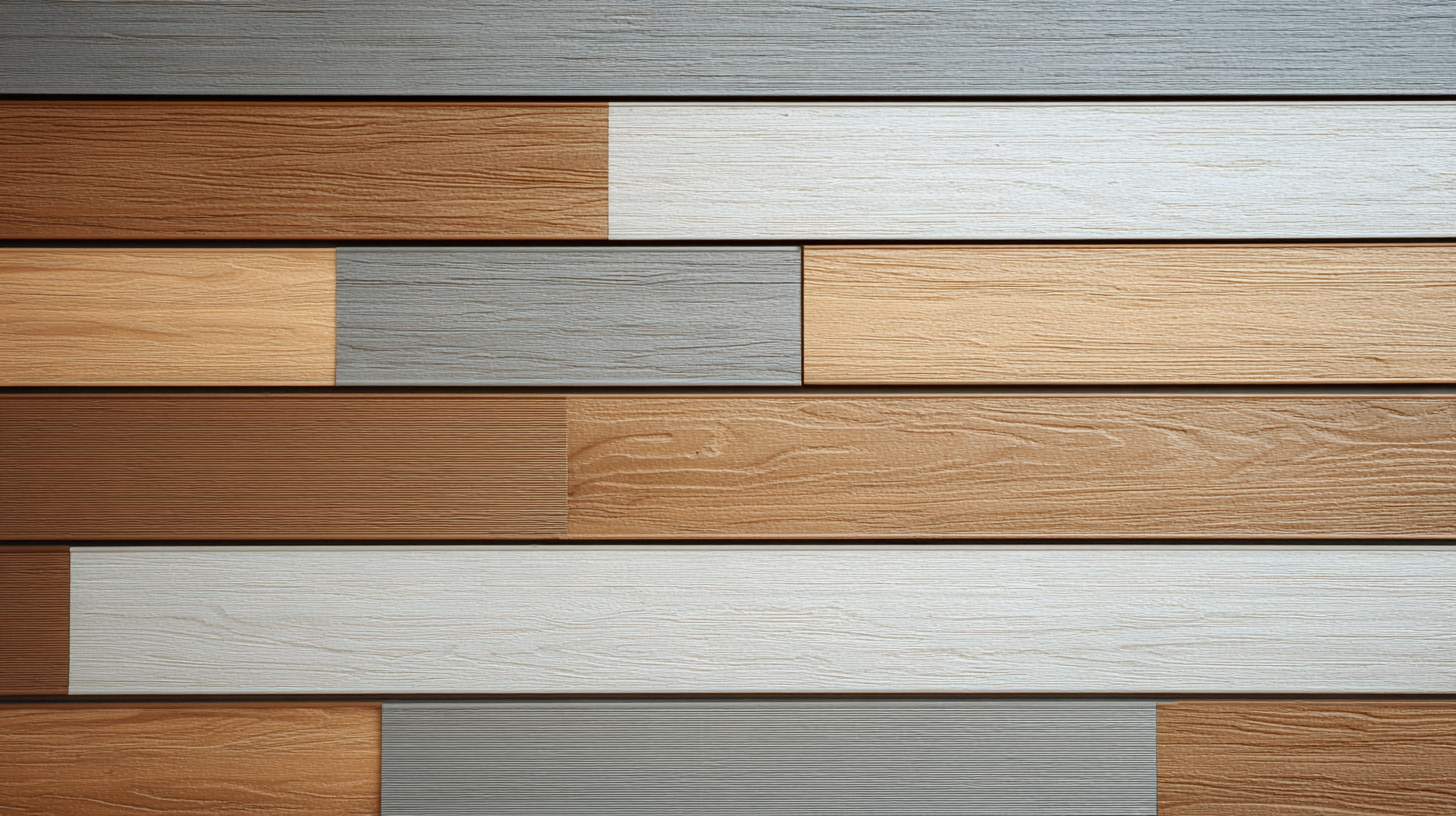
When selecting WPC cladding wall panels for your next project, budgeting and cost comparison play critical roles in ensuring you make an informed decision. The latest reports from the Composite Panel Association indicate that WPC materials, comprised of wood fibers and recycled plastics, generally range in cost from $4 to $7 per square foot, depending on the quality and finish. This price point may seem higher than traditional wood, but with the added benefits of durability and low maintenance, many find WPC to be a worthwhile investment.
In the context of current economic dynamics, such as the recent Washington State budget proposal, which includes a $5.9 billion increase for the 2025-27 biennium primarily in education, financial constraints may push both homeowners and contractors to reconsider their expenditures. The long-term savings from using WPC cladding—due to its resistance to rot, splintering, and fading—can offset the initial costs. As projects evolve and budgets tighten, it is essential to conduct a thorough cost comparison, factoring in not just upfront pricing, but also life-cycle costs, to determine which cladding solution offers the best value for your investment.
